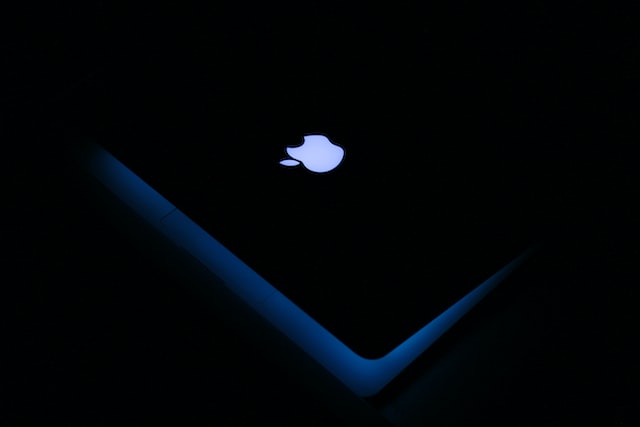Before we get into the specifics of Apple, let’s understand competitor analysis. Competitor analysis is a strategic research method companies use to identify, evaluate, and understand their current and potential competitors within the market. It’s an essential business strategy component and instrumental in understanding the industry landscape.
The process usually involves the following steps:
- Identifying Key Competitors: The first step is to identify who your competitors are. These may be direct competitors (those who offer the same or similar products or services as you) or indirect competitors (those who provide different products or services but compete for the same consumer dollar).
- Analyzing Competitors’ Strategies and Objectives: Once competitors are identified, the next step is to understand their business strategies and objectives. This may involve analyzing their marketing materials, financial performance, customer reviews, or any public information available about the company.
- Assessing Competitors’ Strengths and Weaknesses: This step involves evaluating the identified competitors’ strengths and weaknesses. Strengths include unique products or services, strong brand recognition, and superior customer service. Weaknesses include poor product quality, weak customer service, or high prices.
- Understanding Competitors’ Products/Services: Understanding what your competitors offer and how your products or services compare is essential. This could involve looking at features, quality, pricing, customer service, and marketing strategies.
- Observing Competitors’ Reaction Patterns: Some companies react more aggressively than others when faced with competition. Understanding these patterns lets you predict how these companies might respond to your business strategies.
- Drawing Conclusions and Formulating Strategy: The final step is to take all the information gathered from the analysis, draw meaningful conclusions, and use those to formulate or adjust your business strategies.
The main goal of a competitor analysis is to understand the competitive landscape, spot opportunities and threats, and position your company most advantageously. It helps to inform strategic decisions, from product development to marketing and sales efforts. Now, let’s do a competitor analysis of Apple.
Here is the competitor analysis of Apple
Conducting a competitor analysis for Apple involves examining the significant companies in the same market that offer similar products or services. Apple operates in various segments, including smartphones, computers, wearables, and services. Here’s how you might analyze competitors in these key areas:
- Smartphones:
- Samsung: Samsung is a major competitor in the smartphone market, known for its wide range of Android-based phones that cater to various price points.
- Huawei: A significant player, especially in Asian markets, offering high-end smartphones.
- Google: With its Pixel series, Google competes directly in the smartphone space, emphasizing software and AI capabilities.
- Xiaomi, Oppo, Vivo: These companies are vital in the Asian markets and offer competitive pricing.
- Computers (Laptops and Desktops):
- Dell, HP, Lenovo: Key competitors in the personal computing space, offering a wide range of budget- high-end products.
- Microsoft: Competes with its Surface line of products, known for its integration with Windows software.
- Wearables:
- Fitbit (Google): Known for fitness trackers and smartwatches.
- Samsung: Offers smartwatches and fitness bands that integrate with its smartphones.
- Garmin: Specializes in fitness-focused wearables with robust GPS features.
- Services:
- Streaming (Apple TV+): Competes with Netflix, Amazon Prime Video, Disney+, and HBO.
- Music (Apple Music): Spotify and Amazon Music are key competitors.
- Cloud Services (iCloud): Google Drive, Microsoft OneDrive, and Dropbox are major players in this segment.
How do Apple and Smartphone companies compete?
- Product Design and Innovation:
- Apple: Known for its sleek design, user-friendly interface, and ecosystem integration. Apple often sets trends in design and features (e.g., the introduction of Face ID).
- Others: Companies like Samsung, Huawei, and Google also focus on innovative designs and features, like foldable screens (Samsung Galaxy Z Fold), advanced camera systems, and integration of AI.
- Operating System and Ecosystem:
- Apple: Uses its proprietary iOS, known for its seamless integration with other Apple products like iPads, Macs, Apple Watch, and services.
- Others: Most competitors use Android, which offers more customization and a comprehensive range of hardware choices. Google’s Pixel devices are known for their pure Android experience and timely updates.
- Pricing and Market Segmentation:
- Apple: Generally targets the premium market segment with a higher price point.
- Others: Companies like Samsung, Xiaomi, and Oppo cover a broader market range, from budget to premium, making smartphones accessible to a wider audience.
- Brand Positioning and Marketing:
- Apple: Has a strong brand appeal associated with luxury, innovation, and a premium user experience.
- Others: Brands like Samsung and Huawei also have strong marketing campaigns but cater to a more diverse audience, emphasizing features like battery life, camera quality, and value for money.
- Technology and Features:
- Apple: Focuses on processor performance (with its own A-series chips), camera quality, security features, and user privacy.
- Others: Competitors often emphasize cutting-edge technology like 5G connectivity, advanced photography capabilities, and unique features like reverse wireless charging.
- Sales Channels and Global Reach:
- Apple: Sells through Apple Stores and online platforms, offering a consistent shopping experience worldwide.
- Others: Have a broader distribution network, including third-party retailers and carriers, influential in emerging markets.
- Customer Loyalty and Services:
- Apple: Benefits from a loyal customer base and a growing services sector, including Apple Music, iCloud, and the App Store.
- Others: Also focus on building customer loyalty through brand-specific services and loyalty programs.
How do Apple and Computer companies compete?
- Hardware and Design:
- Apple: Known for its sleek, minimalist design and high-quality build. Apple’s MacBooks and iMacs are often seen as status symbols and are praised for their durability and aesthetics.
- Other Companies (e.g., Dell, HP, Lenovo): Offer a wide range of products from budget-friendly to high-end, focusing on versatility and customization. Many provide more options regarding hardware specifications like processors, RAM, and storage.
- Operating System and Ecosystem:
- Apple: Uses macOS, known for its smooth, intuitive interface and strong integration with Apple’s ecosystem (iPhone, iPad, Apple Watch).
- Others: Primarily use Windows or Linux. Windows is favored in the corporate world for its compatibility with a wide range of software and hardware, whereas Linux is preferred by developers and academic circles for its flexibility and open-source nature.
- Target Market and Usage:
- Apple: Targets creative professionals, students, and users seeking premium products. Macs are popular in the design, music, and film industries for their software capabilities and reliability.
- Others: Cater to a broader market, including businesses, gamers, and general consumers. They offer specialized products like gaming laptops, business workstations, and budget-friendly PCs.
- Innovation and Technology:
- Apple: Often leads in introducing innovative features, like the Touch Bar on MacBook Pros or the M1 chip that offers increased performance and efficiency.
- Others: Focus on cutting-edge technology, like foldable screens, gaming capabilities, and advanced cooling systems.
- Pricing and Accessibility:
- Apple: Generally, it has a higher price point, positioning itself in the market’s premium segment.
- Others: Provide a broader range of pricing options, making computers accessible to a wider audience, from low-budget to high-end models.
- Software and Applications:
- Apple: It offers a suite of proprietary software (e.g., Final Cut Pro and Logic Pro) and benefits from a controlled software ecosystem optimized for its hardware.
- Others: Access various software options, including numerous open-source choices. Windows PCs have a more comprehensive selection of games and business applications.
- Customer Service and Brand Loyalty:
- Apple: Known for its excellent customer service, including in-store support at Apple Stores, and enjoys a loyal customer base.
- Others: Also offer customer support, but through more traditional channels like online and phone support. Brand loyalty varies significantly among different manufacturers.
How do Apple and Wearables companies compete?
- Product Range and Features:
- Apple (Apple Watch): Known for its high-quality design and deep integration with the Apple ecosystem. Features include fitness tracking, heart rate monitoring, ECG, fall detection, and seamless connectivity with iPhones.
- Other Companies (e.g., Fitbit, Samsung, Garmin): Offer a variety of wearables, including fitness-focused devices, smartwatches, and specialized wearables for specific activities like running or swimming. These often include features like sleep tracking, sports modes, and long battery life.
- Operating System and Ecosystem Integration:
- Apple: Uses watchOS, which is closely integrated with iOS, providing a smooth user experience for iPhone users.
- Others: Use various operating systems, like Google’s Wear OS or proprietary systems. These are often compatible with both Android and iOS devices, though the integration may not be as seamless as Apple’s ecosystem.
- Health and Fitness Tracking:
- Apple: Offers comprehensive health and fitness tracking capabilities and has been increasingly focusing on health-related features.
- Others: Brands like Fitbit and Garmin are known for their advanced fitness and health tracking features, often offering more detailed data and metrics, especially for specific workouts or health monitoring types.
- Style and Customization:
- Apple: Offers a range of bands and has collaborated with high-end brands for special editions. The Apple Watch’s design is iconic but consistent across models.
- Others: Provide various styles, from sporty to classic watch designs. Companies like Samsung and Fossil offer more traditional watch aesthetics in their smartwatch lineups.
- Price Points and Market Segmentation
- Apple: Generally targets the premium market segment with a relatively higher price range.
- Others: Offer products across a broader price spectrum, from budget-friendly fitness trackers to high-end smartwatches, catering to a broader audience.
- Battery Life and Durability
- Apple: The Apple Watch typically requires daily charging.
- Others: Many competitors offer longer battery life, with some devices lasting several days or weeks on a single charge, which is particularly appealing for users who prioritize battery life or engage in activities like hiking and camping.
- Brand Loyalty and Customer Base:
- Apple: Enjoys a loyal customer base, particularly among existing Apple product users due to ecosystem integration.
- Others: Have their own loyal customer segments, often appealing to users with specific needs like advanced fitness tracking or a preference for traditional watch designs.
How do Apple and Service companies compete?
- Streaming Services (Apple TV+ vs. Netflix, Amazon Prime, Disney+, HBO Max):
- Apple TV+: Focuses on quality over quantity, investing in original content with high production value. Integrates seamlessly with Apple’s ecosystem.
- Competitors: Offer a vast content library, including movies, TV shows, and documentaries. Netflix and Amazon Prime, for instance, have a large base of original and licensed content appealing to a diverse audience.
- Music Streaming (Apple Music vs. Spotify, Amazon Music, YouTube Music)
- Apple Music: Known for its integration with Apple’s ecosystem, high-quality audio, and curated playlists. Also offers some exclusive content.
- Competitors: Spotify leads in user numbers, offering algorithm-driven personalized playlists, a vast library, and social sharing features. Other services like Amazon Music and YouTube Music also compete with unique features like YouTube video integration.
- Cloud Storage (iCloud vs. Google Drive, Microsoft OneDrive, Dropbox):
- iCloud: Integrated tightly with Apple devices, offering seamless backup and sync for photos, documents, and device settings.
- Competitors: Provide broader platform compatibility. Google Drive is deeply integrated with Google’s suite of applications, while OneDrive is integrated with Microsoft Office products. Dropbox stands out for its simplicity and cross-platform functionality.
- App Stores (Apple App Store vs. Google Play Store):
- Apple App Store: Known for its strict app review process, ensuring a high level of security and quality for apps. Exclusive to iOS devices.
- Google Play Store: Offers a larger variety of apps due to a more lenient review process. It is available on all Android devices and is known for integrating with the Google ecosystem.
- Digital Payments (Apple Pay vs. Google Pay, Samsung Pay, PayPal):
- Apple Pay: Integrated into Apple devices, offering a secure and convenient payment method. Gaining traction in physical retail through NFC.
- Competitors: Provide similar functionalities but are available on a wider range of devices. Google Pay and Samsung Pay also offer unique features tailored to their ecosystems.
- Smart Home Ecosystems (Apple HomeKit vs. Amazon Alexa, Google Home):
- Apple HomeKit: Offers integration with Apple’s ecosystem, focusing on privacy and security in managing smart home devices.
- Competitors: Amazon Alexa and Google Home have a broader range of compatible devices and more advanced voice assistant features, making them leaders in the smart home market.
- Subscription Services (Apple One vs. Various Bundled Services)
- Apple One: Bundles various Apple services like iCloud, Apple Music, Apple TV+, and Apple Arcade, offering convenience and some cost savings for users within the Apple ecosystem.
- Competitors: Companies like Amazon offer bundled services (e.g., Amazon Prime includes video, music, and cloud storage), while others are exploring similar bundled service models.











